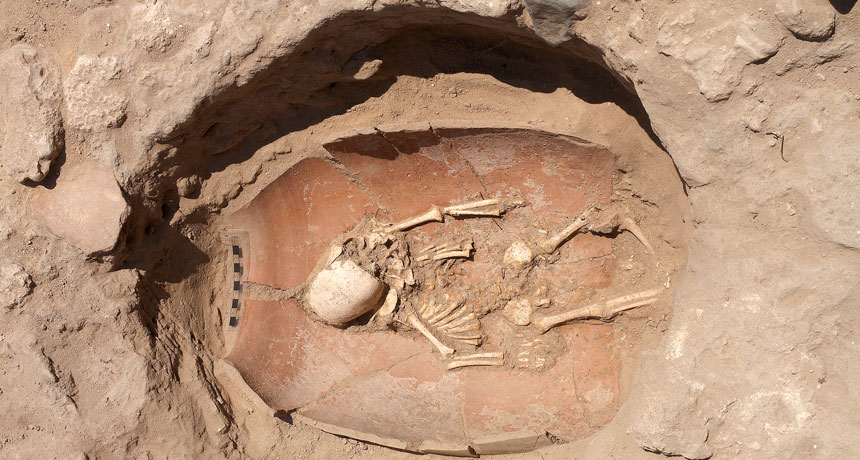Ancient DNA reveals the origins of the Philistines
These mysterious people may have fled collapsing societies in southern Europe for Israel

FROM THE SEA DNA obtained from remains of people who inhabited an ancient city on Israel’s coast, including this child, indicate that the Philistines mentioned in the Hebrew Bible descended from seafaring Europeans.
Robert Walch/Leon Levy Expedition to Ashkelon







